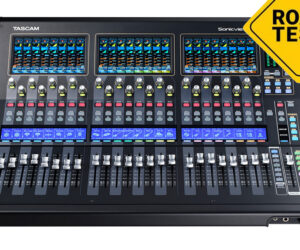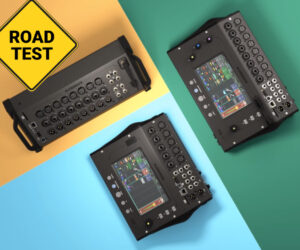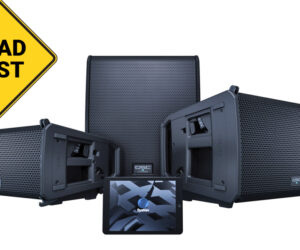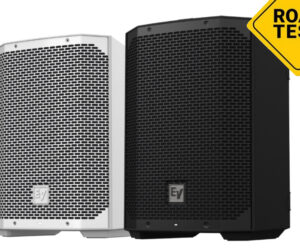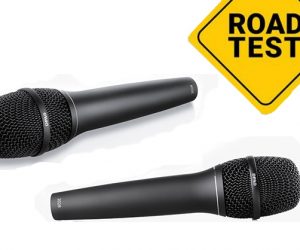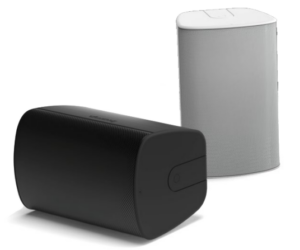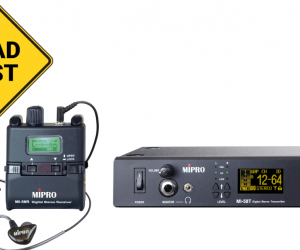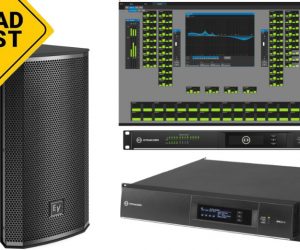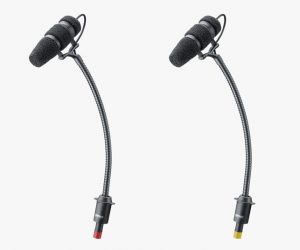The new Electro-Voice RE3 is a UHF wireless system available in 10 pre-packaged sets that each contain a half-rack-space diversity receiver along with rack-mounting hardware and antennas, a handheld or beltpack transmitter, microphone, and universal power supply.
The RE3-HHT handheld transmitter is available with three of the company’s ND elements, including the ND76 dynamic cardioid, ND86 dynamic supercardioid, and ND96 dynamic supercardioid. Two condenser elements are also available – the RE420 cardioid and RE520 supercardioid. The transmitters are outfitted with industry-standard threads and signal contact points, opening up the options for capsule interchangeability.
The three beltpack transmitter options include the model BPOL with OL3 omnidirectional lavalier, BPCL with the CL3 cardioid lavalier, and BPHW with the HW3 supercardioid headworn microphone. For instruments, the BPGC transmitter is offered (including 1/4-inch instrument cable), and there’s an option to get the beltpack transmitter without a mic and cable.
The RE3 is available in three frequency bands here in North America, including 488 to 524 MHz (5L band), 560 to 596 MHz (5M band), and 653 to 663 MHz (6M band) that operates within the 600 MHz duplex gap the FCC has dedicated to pro audio wireless systems. There are 1,440 selectable frequencies in the 5L and 5H bands and 400 selectable frequencies in 6M band. Two additional band options are offered, including 8M for use in select areas of Europe and T for use in Thailand only.
RE3 transmitters feature selectable low- and high-output power settings at 10 or 50 milliwatts. The 6M band system offers selectable power of either 10 or 20 milliwatts. All systems offer diversity reception, automated frequency scanning and wireless syncing of the transmitter to the selected frequency, along with eight groups of pre-coordinated frequencies with up to 22 coordinated channels per group.
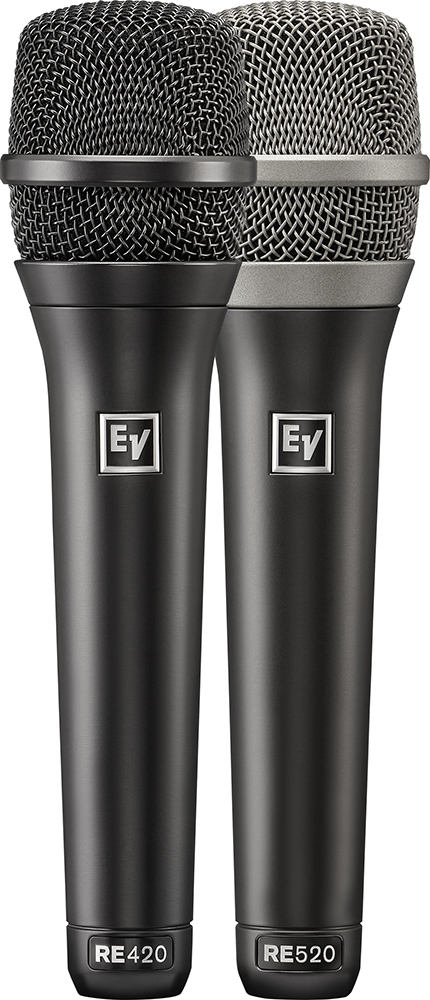
Available accessories include a two-slot drop-in battery charger for both handheld and beltpack transmitters, active and passive log periodic antenna systems and antenna splitters, an active antenna booster, rack-mount kits, and coax cables in a range of lengths. The receivers can be placed on a table as well as rack-mounted singly (hardware included) or side-by-side, two per rack space, with optional hardware.
For my evaluation, EV supplied two systems, one including the handheld transmitter with ND76 and RE520 elements and the other with a BPT bodypack transmitter and OL3 lavalier.
The ND76 dynamic mic head has a large Mylar diaphragm shock-mounted capsule that minimizes handling noise, and it’s designed for all-around vocals. Stated frequency response is 30 Hz to 17 kHz (when used close) and maximum SPL is 135.5 dB.
The RE520 self-biased condenser head comes with a stated frequency response of 40 Hz to 20 kHz and is specified to handle a whopping 139 dB. It sports a multi-stage pop filter to reduce breath and wind noises and has an internal shock mount that isolates the element from vibration and handling noises. Also included is a high-pass switch that can be set to flat or to roll-off frequencies below 150 Hz.
The OL3 self-biased condenser lavalier, very small, has a stated frequency response of 60 Hz to 15 kHz, carries a max SPL rating of 130 dB, and ships with a rugged metal clothing clip, a few windscreens and a zippered pouch.
The RX receiver is very easy to use. There’s a large, easy-to-read LCD screen centered on the front panel. To the left are Sync and Scan buttons joined by an IR signal emitter to sync transmitters. To the right are menu navigation buttons and the power button.
The rear surface offers dual BNC jacks for the supplied half-wave whip antennas, XLR balanced output jack, 1/4-inch unbalanced output jack and DC power input.



